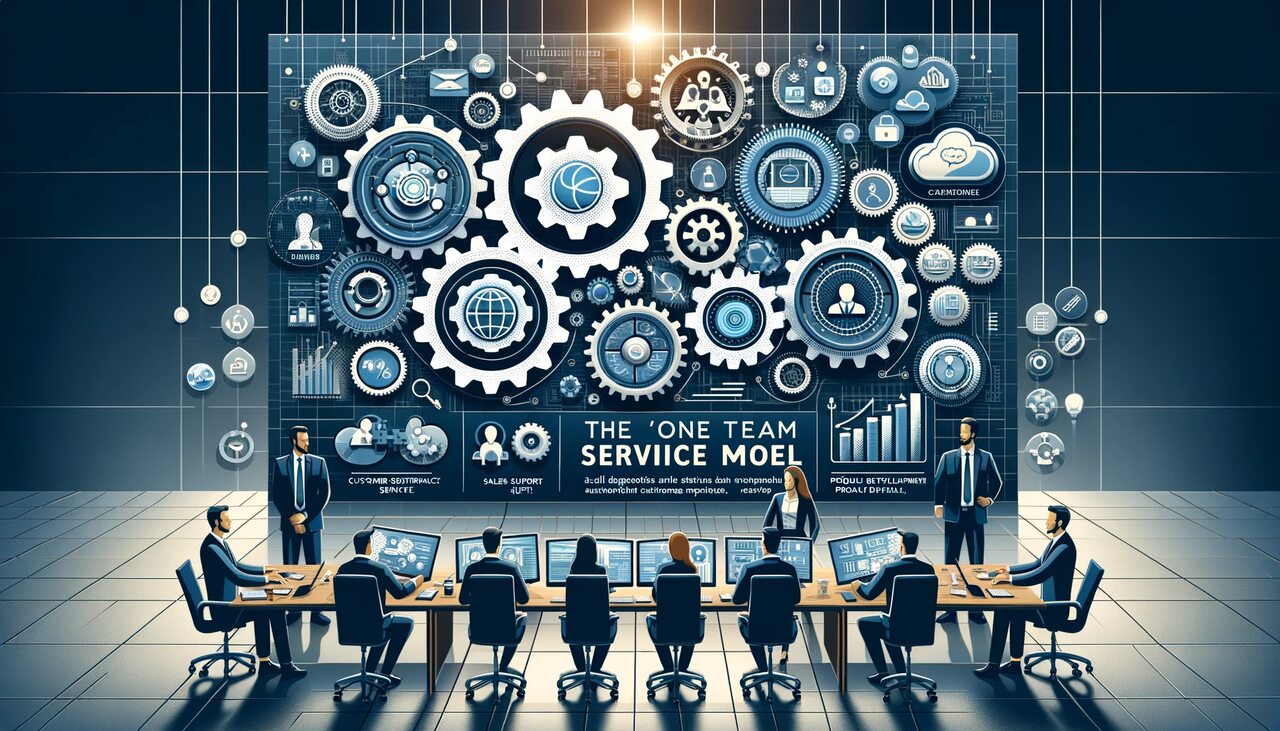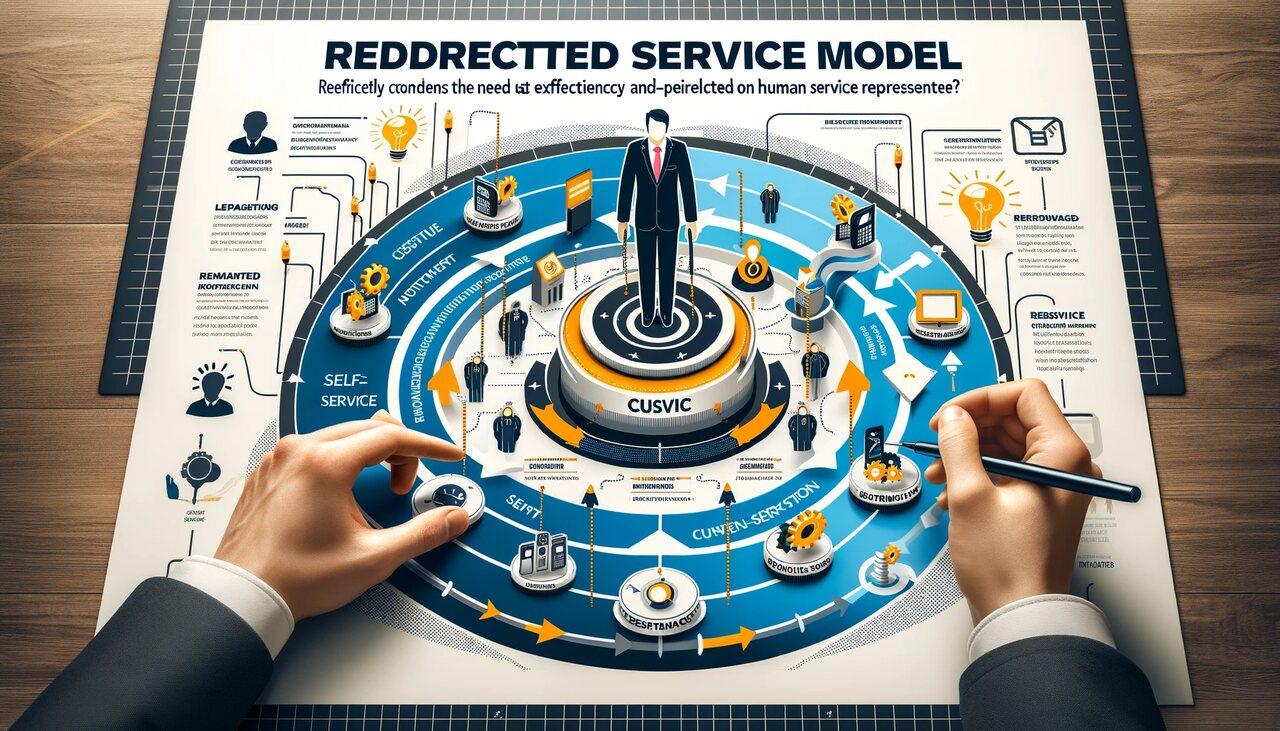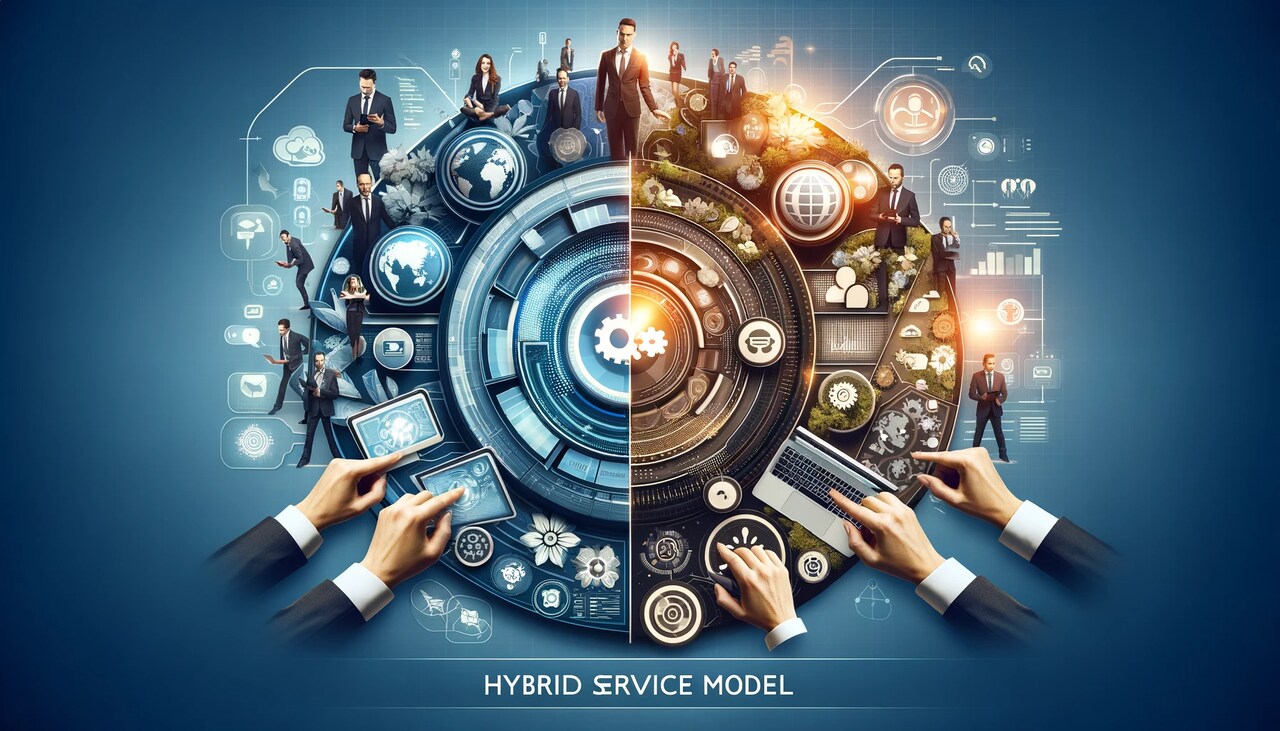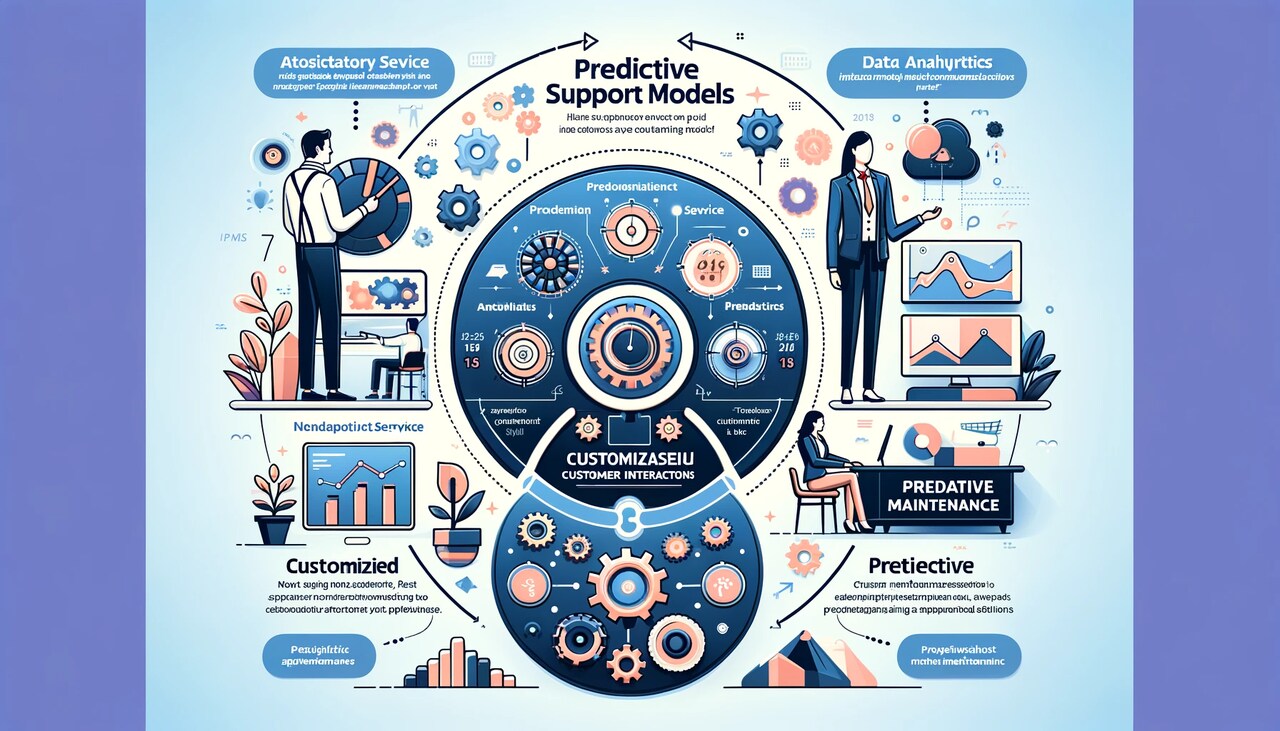
Customer Service Models: Types, Examples & Steps to Develop
An effective customer service model serves as the backbone of customer satisfaction and loyalty, profoundly impacting the overall success of any organization.
This article delves into various customer service models, providing a comprehensive overview of their structures, functionalities, and the unique value they offer.
From traditional face-to-face interactions to innovative AI-driven support, we explore various models catering to diverse business needs and customer expectations.
Let’s examine valuable insights and real-world examples to help you enhance your customer service approach.
What is a Customer Service Model & Why Do We Need It?
A customer service model is a framework or strategy that guides how a business interacts with its customers.
It encompasses the policies, procedures, and tools used to handle customer interactions, address their needs, and resolve any issues they face.
The significance of a customer service model lies in its ability to create a consistent, positive experience for customers, which is crucial for building trust, loyalty, and a strong brand reputation.
The need for a specific customer service model arises from several factors:
- Customer Expectations: With the evolution of digital platforms, customer expectations for quick, efficient, and personalized service are higher than ever.
- Brand Differentiation: A unique customer service model can set a business apart from its competitors.
- Operational Efficiency: A well-defined model streamlines processes, making service delivery more efficient.
- Feedback and Improvement: It provides a structure for receiving and implementing customer feedback, leading to continuous improvement in service quality.

The Two Main Types of Customer Service Models Discussed
Customer service models can be broadly categorized into two main types:
1. Reactive Service Model: This traditional model is focused on responding to customer inquiries and issues as they arise.
It relies heavily on customer-initiated contact, such as calls or emails, to address problems.
The main goal here is to resolve issues quickly and effectively, but it often lacks a proactive approach to preventing issues before they occur.
2. Proactive Service Model: This model takes a more forward-thinking approach. It involves anticipating customer needs and addressing them before they become issues.
This could include regular check-ins, personalized recommendations based on past purchases, or educational content about product usage.
The proactive model aims not just to solve problems but to enhance the overall customer experience and satisfaction.
Both models have their strengths and are often used in combination to provide a comprehensive customer service experience. The choice between them depends on various factors, like the nature of the business, customer expectations, and resource availability.
Top 8 Customer Service Models to Implement
1. Convenient Service Model
The Convenient Service Model prioritizes ease and accessibility for the customer. It aims to provide a service that is fast, easy to understand, and accessible across multiple channels.
Key features include extended service hours, user-friendly interfaces, and minimal waiting times. This model is ideal for businesses that cater to a broad customer base with diverse needs, especially in retail or e-commerce sectors.
2. One Team Service Model
The One Team Service Model emphasizes a unified approach where all departments work together to address customer needs.
This model breaks down silos between different teams (like sales, support, and product development) to provide a more cohesive customer experience.
It's particularly effective in complex service environments, such as technology or B2B industries, where comprehensive knowledge and collaboration are essential.

3. In-Depth Personalized Service Model
This model focuses on offering highly personalized and tailored customer service. It involves understanding individual customer preferences, history and needs to provide bespoke solutions.
Businesses that employ this model typically invest in CRM (Customer Relationship Management) systems and train their staff to interpret customer data effectively. High-end retailers, luxury hotels, and personalized healthcare services often use this model.
4. One-on-One Contact Service Model
The One-on-One Contact Service Model is built around creating a direct, personal connection between a customer service representative and the customer.
This approach is highly effective for building long-term customer relationships and is often used in premium services, private banking, and personalized consultancy services.

5. Redirected Service Model
Customers are initially directed to automated or self-service options in the Redirected Service Model.
However, if these channels cannot meet their needs, they are quickly redirected to a human service representative.
This model balances efficiency and personal touch, suitable for industries like telecommunications or software services.
6. Self-Service Model
The Self-Service Model empowers customers to find solutions independently through well-organized FAQs, online tutorials, and community forums.
This model is cost-effective and can significantly enhance customer satisfaction by providing instant answers to common questions.
It's widely used in tech industries and for products or services where customers prefer quick self-resolution.
7. Online Service Model
This entirely digital model provides customer service through online channels like chat, email, social media, or AI chatbots.
The Online Service Model is scalable and efficient, making it ideal for businesses operating in the digital space, like e-commerce platforms, online service providers, and digital agencies.

8. Hybrid Service Models
Hybrid Service Models combine elements of various models to provide a versatile and adaptive approach to customer service.
This model is flexible and can be tailored to suit a business's and its customers' specific needs.
It is becoming increasingly popular as it allows companies to provide a more holistic service experience, combining the efficiency of digital solutions with the personal touch of human interaction.
How To Develop A Successful Customer Service Strategy
Developing a successful customer service strategy involves several key steps.
Here's an outline focusing on defining goals, understanding customer expectations, and evaluating resources.
Define Your Customer Service Goals
Identifying Objectives:
Begin by setting clear, measurable goals for your customer service. These could range from increasing customer satisfaction scores and reducing response times to boosting customer retention rates. Goals should align with your overall business objectives and be realistic and achievable.
Setting KPIs:
Establish key performance indicators (KPIs) to measure the success of your customer service efforts. Common KPIs include first response time, resolution time, customer satisfaction score (CSAT), Net Promoter Score (NPS), and customer effort score (CES).
Continuous Improvement:
Your goals should evolve with your business and customer expectations. Regularly review and adjust your objectives to reflect changes in the market and customer feedback.

Understand Your Customer's Expectations and Needs
Customer Feedback:
Collect and analyze customer feedback through surveys, social media, customer reviews, and direct communication. Understand what your customers value most in their service experience.
Market Research:
Stay informed about industry trends and competitors. Understanding the broader market helps in anticipating changes in customer expectations.
Customer Personas:
Develop detailed customer personas. This involves creating representative profiles of your customer segments, including their preferences, behaviors, and pain points. Personas help in tailoring your service approach to different types of customers.
Evaluate Your Resources
Staff Assessment:
Assess the skills and capabilities of your customer service team. Identify any gaps in training and consider the need for additional hiring.
Technology and Tools:
Review the technology and tools at your disposal. This includes CRM systems, communication platforms, and data analytics tools. Ensure they meet your customer service goals adequately, and consider investing in new technologies if necessary.
Budget Constraints:
Align your customer service strategy with your budget. Effective resource allocation is crucial in balancing cost and quality of service.
Scalability:
Consider the scalability of your resources. As your business grows, your customer service strategy should be able to adapt and expand to meet increasing demands.
Tips for Implementing a Customer Service Model:
Implementing a customer service model successfully involves several strategic actions.
These are aimed at ensuring your team is well-equipped, your service channels are effective, and you have mechanisms in place to monitor and refine your approach.
Here are some essential tips:
Train Your Staff for Customer Complaint Handling
→ Comprehensive Training: Provide thorough training for your staff on how to handle customer complaints effectively. This should cover product knowledge, communication skills, empathy, and problem-solving techniques.
→ Role-playing Exercises: Utilize role-playing scenarios to simulate common customer issues. This helps staff practice and get comfortable with handling difficult situations.
→ Feedback and Coaching: Regularly provide feedback and coaching to your staff. Use real examples of customer interactions to highlight areas of strength and opportunities for improvement.
→ Empower Your Team: Empower your team to make decisions and solve problems. This increases their ability to handle complaints effectively and efficiently.

Offering Multiple Support Channels
→ Diverse Channels: Offer a variety of support channels such as phone, email, live chat, social media, and self-service options. This caters to the different preferences and needs of your customers.
→ Integrated Systems: Ensure these channels are integrated so that customer information and conversation histories are accessible across all platforms. This helps in providing a seamless and consistent customer experience.
→ Channel Efficiency: Regularly review the efficiency and effectiveness of each channel. Some may require additional resources or improvements based on customer usage and feedback.
Monitor the Success of Your Model
→ Set Key Performance Indicators (KPIs): Define clear KPIs to measure the success of your customer service model. These could include customer satisfaction scores, resolution times, and repeat contact rates.
→ Regular Reviews and Surveys: Conduct regular performance reviews and gather customer feedback through surveys and direct feedback channels.
→ Data Analysis: Utilize data analytics to gain insights into customer behavior, service efficiency, and areas for improvement.
→ Adapt and Evolve: Be prepared to adapt your model based on feedback and changing customer needs. Continuous improvement should be a core aspect of your customer service strategy.
How Can You Evaluate Your Current Model?
1. Customer Feedback Analysis: Collect and analyze feedback from your customers. Use surveys, feedback forms, social media comments, and direct conversations to gauge their satisfaction. Pay attention to recurring themes in the feedback, as they often highlight key improvement areas.
2. Review Key Performance Indicators (KPIs): Assess your customer service performance against predefined KPIs. Common KPIs include average response time, resolution time, customer satisfaction score (CSAT), Net Promoter Score (NPS), and customer retention rates. Compare these metrics against industry benchmarks or your past performance to see where you stand.
3. Mystery Shopping or Quality Audits: Use mystery shopping or conduct regular quality audits. This involves having individuals pose as customers and interact with your customer service team to assess their response quality, protocol adherence, and overall effectiveness.
4. Employee Feedback and Engagement: Gather feedback from your customer service team. They can provide insights into what works well and what doesn’t based on their day-to-day interactions with customers. Also, assessing their engagement and satisfaction as a motivated team is crucial for providing excellent service.
5. Process and Policy Review: Examine your existing customer service processes and policies. Are they efficient and customer-friendly? Look for bottlenecks, outdated procedures, or guidelines that might be hindering your team’s ability to provide excellent service.

6. Technology and Tools Assessment: Evaluate the technology and tools used in providing customer service. Are they up-to-date and effective? Ensure your team has the right tools to manage customer interactions efficiently and provide timely support.
7. Competitor Benchmarking: Compare your service model with your competitors. This helps you understand where you stand in the market and identify best practices you could adopt.
8. Cost vs. Benefit Analysis: Assess the cost-effectiveness of your customer service model. Are you allocating your resources efficiently? Ensure that the investment in customer service translates into customer satisfaction and loyalty.
9. Scalability and Flexibility Test: Determine if your current model is scalable and flexible enough to adapt to changing business needs and customer expectations.
10. Continuous Improvement Cycle: Establish a cycle of continuous improvement. Use the insights gained from the evaluation to make informed changes and then reassess to measure the impact of those changes.
Future of Customer Service with Trends
The future of customer service is shaping up to be an exciting blend of technology and personalized service.
Here are some key trends and innovations that are likely to define the landscape:
AI-powered Customer Support
- Integration of Chatbots and Virtual Assistants: AI-powered chatbots and virtual assistants are becoming increasingly sophisticated, capable of handling a wide range of customer service tasks, from answering FAQs to complex problem-solving.
- Personalization Through AI: AI algorithms can analyze customer data to provide personalized service recommendations and solutions, enhancing the customer experience.
- Automated Process Optimization: AI can help optimize and automate customer support processes by analyzing patterns and predicting issues, leading to more efficient service delivery.
- 24/7 Support Capabilities: With AI, businesses can offer round-the-clock customer support, ensuring that customer queries are addressed at any time of the day.

Predictive Support Models
- Anticipatory Service: Predictive support models use data analytics to anticipate customer needs and problems before they arise, offering proactive solutions.
- Customized Customer Interactions: By analyzing past customer interactions, predictive models can tailor the support experience to individual preferences and history.
- Predictive Maintenance: In product-based industries, predictive support can be used for preemptive maintenance, thereby reducing downtime and enhancing customer satisfaction.
Peer-to-Peer Customer Support
- Community-Driven Support: Encouraging customers to help each other through forums and community platforms, creating a collaborative support environment.
- Leveraging Customer Expertise: Peer-to-peer support allows customers with specific product or service expertise to share their knowledge, often leading to more detailed and practical solutions.
- Building Brand Loyalty: This model fosters a sense of community around a brand, enhancing customer engagement and loyalty.
To Conclude
In conclusion, the landscape of customer service is dynamic and ever-evolving.
This comprehensive article has explored various aspects of customer service models, from understanding the basics and choosing the right model to implementing strategies and staying ahead of emerging trends.
The key takeaway is the importance of adapting your customer service approach to meet the changing needs of your customers and the evolving technological landscape.
For further reading, you might be interested in the following:






